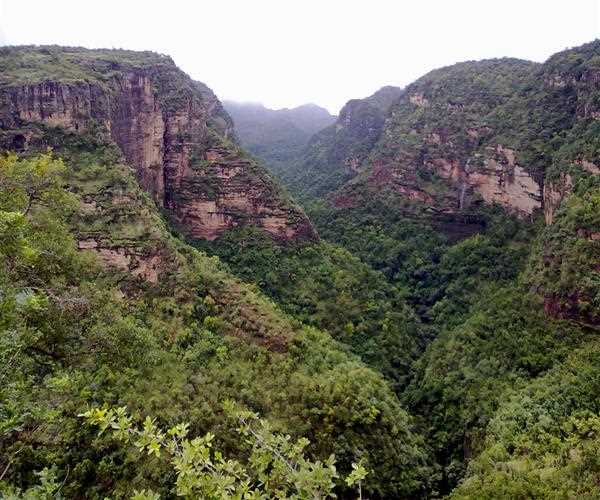The Satpura Range is a range of hills and mountains located in central India, covering parts of Maharashtra, Madhya Pradesh, and Gujarat. The range is approximately 900 km long and 150 km wide and is known for its rich biodiversity and scenic beauty. The highest peak of the Satpura Range is Dhupgarh, which is located in the state of Madhya Pradesh.
Dhupgarh is located in the Pachmarhi district of Madhya Pradesh and has an elevation of 1,350 meters (4,429 feet) above sea level. The peak is part of the Satpura Range's Mahadeo Hills and is a popular tourist destination due to its stunning views and natural beauty.
The trek to the top of Dhupgarh is challenging but rewarding, with hikers being able to enjoy panoramic views of the surrounding hills and forests. The peak is also home to several small temples and shrines, adding a spiritual element to the trek.

Apart from being a popular tourist destination, Dhupgarh also holds significant historical and cultural significance. The Mahadeo Hills, of which Dhupgarh is a part, are believed to have been inhabited by the Gond tribes for thousands of years. The region is also said to have been visited by several Hindu saints and scholars, including Adi Shankaracharya and the 13th-century saint, Tulsidas.
The Satpura Range is home to a rich variety of flora and fauna, with the forests around Dhupgarh being known for their diverse plant and animal life. The forests are home to several rare and endangered species, including the Indian giant squirrel, the flying squirrel, and the sloth bear. The range is also home to several species of birds, making it a popular destination for birdwatchers.
In conclusion, Dhupgarh is the highest peak of the Satpura Range, located in the state of Madhya Pradesh, India. The peak holds significant cultural and historical significance and is a popular tourist destination due to its stunning views and rich biodiversity. The trek to the top of Dhupgarh is challenging but rewarding, with hikers being able to enjoy panoramic views of the surrounding hills and forests.